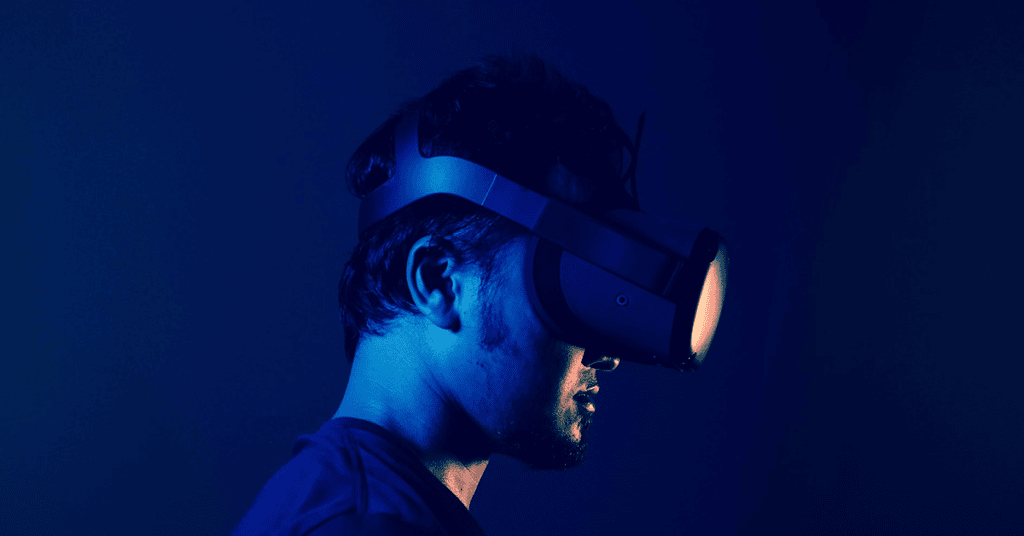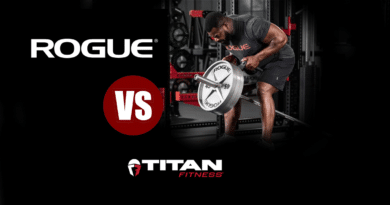9 Best Virtual Reality Fitness Apps
This extensive guide will teach you everything you need to know about virtual reality fitness apps, how they work, and whether they are right for you.
What are Virtual Reality Fitness Apps?
Virtual reality fitness apps are software programs that use virtual reality technology to provide users with an immersive workout experience.
These apps typically include virtual environments, such as gyms or outdoor settings, and virtual trainers or coaches that guide users through exercises and workouts. Users typically wear a VR headset, such as the Oculus Quest or PlayStation VR, to fully immerse themselves in the virtual environment.
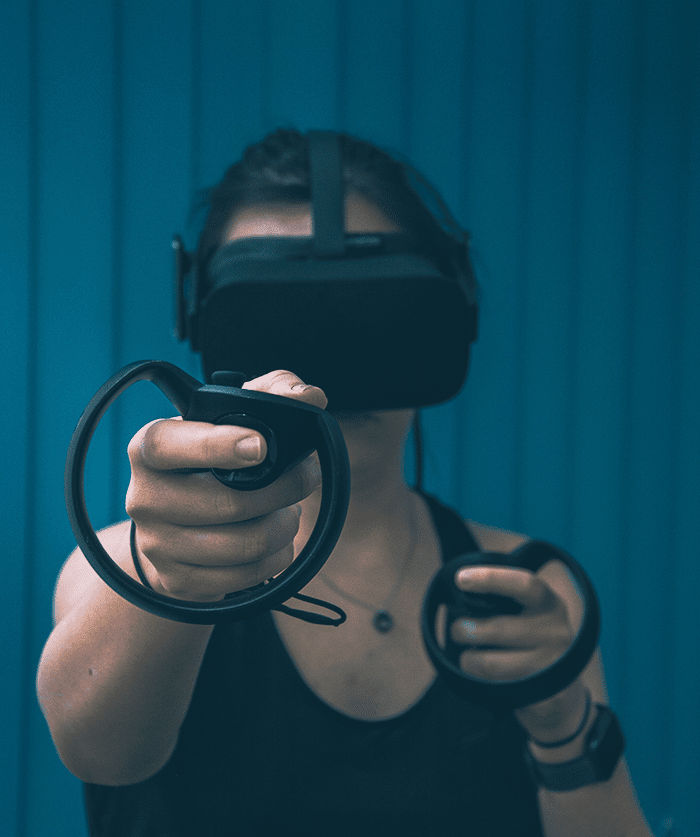
The apps may include a variety of exercise types, such as cardio, strength training, yoga, and more. Some apps also offer multiplayer functionality, allowing users to work out with friends or compete against others in virtual environments.
- What are Virtual Reality Fitness Apps?
- 1. Virtual Reality Fitness Apps – Supernatural
- 2. Virtual Reality Fitness Apps – FitXR
- 3. Virtual Reality Fitness Apps – The Thrill of the Fight
- 4. Virtual Reality Fitness Apps – VRFit
- 5. Virtual Reality Fitness Apps – BoxVR
- 6. Virtual Reality Fitness Apps – In Death: Unchained
- 7. Virtual Reality Fitness Apps – Liteboxer VR
- 8. Virtual Reality Fitness Apps – OhShape
- 9. Virtual Reality Fitness Apps – Holofit
- Can I Lose Weight Playing VR?
- Does Oculus Have Workout Apps?
- How Long Should You Be in VR for a Day?
- Is it Healthy to Play VR Every Day?
- Is it OK to Sleep in VR?
- Can VR Give You Muscles?
- Is there VR Zumba?
- How Many Calories are Burned Playing VR?
- Can VR Damage your Health?
The goal of virtual reality fitness apps is to make working out more engaging and enjoyable, and to provide users with a unique and immersive exercise experience.
1. Virtual Reality Fitness Apps – Supernatural
Supernatural is a virtual reality fitness app that combines live-coached classes with immersive VR environments. The app is designed to provide users with a unique and engaging workout experience that feels like a video game. The app offers a variety of classes, including cardio, strength training, yoga, and more.
One of the key features of Supernatural is its live-coached classes. Users can join a class in real-time and follow along with a virtual trainer, who is also in the virtual environment. The trainers provide verbal cues and encouragement, making it feel like you are working out with a personal trainer in a real gym.
The app also features a variety of immersive environments, such as mountains, beaches, and cityscapes. Users can choose the environment that they want to workout in, and the app will adjust the virtual scenery to match the class that they are taking.
Supernatural is available on several VR platforms, including the Oculus Quest and the Oculus Quest 2. The app also supports multiplayer functionality, allowing users to workout with friends in virtual environments.
The app has received positive reviews, with users praising its immersive environments, live-coached classes, and variety of workout options. Some users have noted that the app is a bit on the expensive side, but many believe that the unique and engaging workout experience is worth the cost.
2. Virtual Reality Fitness Apps – FitXR
FitXR is a virtual reality fitness app that offers a variety of dance-based workouts that can be done in VR. The app is designed to make working out more fun and engaging by providing users with an immersive and interactive experience.
The app includes a variety of different dance styles, such as pop, hip-hop, and electronic dance music (EDM). Users can choose from a variety of different workout routines, each set to its own music and choreography. The app also includes a feature called “XR Fitness,” which is a virtual personal trainer that guides users through the routines, providing verbal cues and encouragement.
The app also features multiplayer functionality, allowing users to join virtual dance parties with other users and compete against them in virtual environments.
FitXR is available on several VR platforms, including the Oculus Quest, Oculus Quest 2 and the PlayStation VR.
The app has received positive reviews, with users praising its immersive environments, fun and engaging workout routines, and multiplayer functionality. Some users have noted that the app is a bit on the expensive side, but many believe that the unique and engaging workout experience is worth the cost.
It’s worth noting that FitXR is not just limited to Dance, it also includes Boxing, Yoga, Cardio and more.
3. Virtual Reality Fitness Apps – The Thrill of the Fight
The Thrill of the Fight is a virtual reality fitness app that provides a full-body workout through boxing simulations. The app is designed to simulate a realistic boxing experience, allowing users to punch and dodge virtual opponents in the virtual ring. The app also includes a virtual personal trainer that guides users through their workouts, providing verbal cues and encouragement.
The app includes several different opponents, each with its own unique fighting style. Users can choose to fight against opponents of varying skill levels, and the app will adjust the difficulty of the fight accordingly. The app also includes a variety of different game modes, such as survival mode and tournament mode, to keep users engaged and challenged.
The app is available on several VR platforms, including the Oculus Quest and the Oculus Quest 2.
The Thrill of the Fight has received positive reviews, with users praising its immersive environments, realistic fighting mechanics, and the full-body workout that it provides. Some users have noted that the app can be a bit difficult to master, but many believe that the sense of accomplishment that comes from improving one’s skills is well worth the effort.
It’s also worth noting that it’s a good option for people who want a more intense and physically demanding workout, and it’s a great way to improve hand-eye coordination, reaction time and overall fitness.
4. Virtual Reality Fitness Apps – VRFit
VRFit is a virtual reality fitness app that focuses on yoga and other low-impact exercises that can be done in VR. The app is designed to provide users with an immersive and interactive workout experience, allowing them to participate in virtual yoga classes with virtual instructors.
The app includes a variety of different yoga routines, each with its own virtual instructor. Users can choose from a variety of different routines, including beginner, intermediate and advanced levels. The app also includes a feature called “Virtual Yoga Coach” which guides users through each routine, providing verbal cues and encouragement.
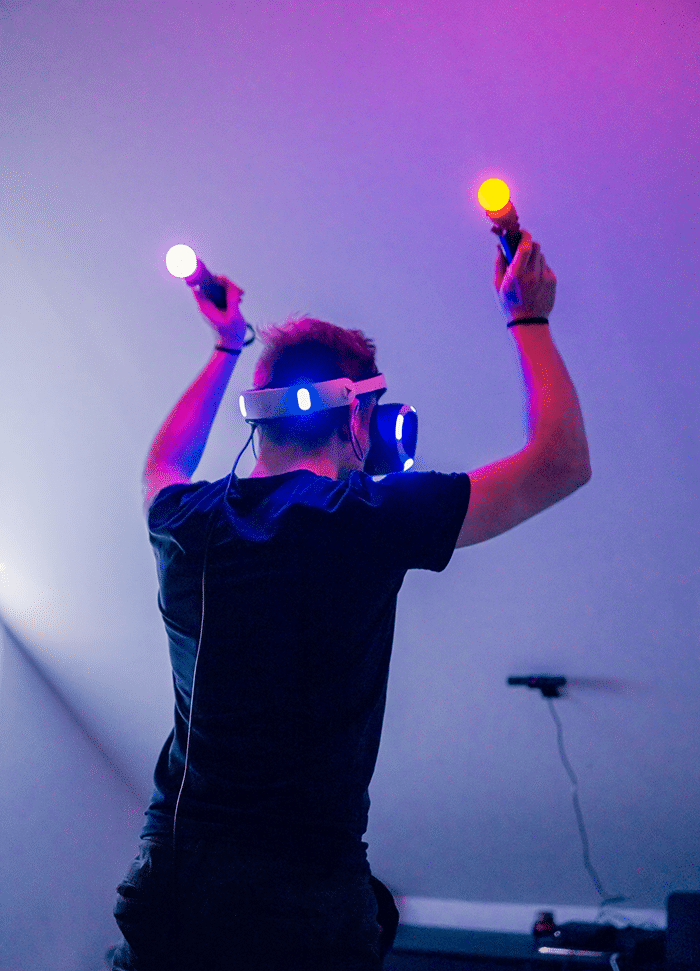
The app features beautiful virtual environments, such as nature landscapes, beach, and mountain ranges to make the yoga experience more relaxing and enjoyable. The app also includes a feature that allows users to customize their virtual environment, such as changing the time of day and weather, to create their ideal yoga setting.
VRFit is available on several VR platforms, including the Oculus Quest, Oculus Quest 2 and the PlayStation VR.
The app has received positive reviews, with users praising its immersive environments, relaxing and enjoyable yoga routines, and virtual Yoga Coach feature. Some users have noted that the app is a bit on the expensive side, but many believe that the unique and engaging workout experience is worth the cost.
It’s worth noting that VRFit is a great option for people who want to improve their flexibility, balance, and overall well-being, and it’s a great way to reduce stress and improve mental health.
5. Virtual Reality Fitness Apps – BoxVR
BoxVR is a virtual reality fitness app that features high-energy boxing and fitness workouts. The app is designed to provide users with an immersive and interactive workout experience, allowing them to punch and dodge virtual opponents in the virtual ring. The app also includes a virtual personal trainer that guides users through their workouts, providing verbal cues and encouragement.
The app includes a variety of different workout routines, each with its own unique music and choreography. Users can choose from a variety of different routines, including cardio, strength, and high-intensity interval training (HIIT) workouts. The app also includes a variety of different game modes, such as survival mode and tournament mode, to keep users engaged and challenged.
BoxVR is available on several VR platforms, including the Oculus Quest, Oculus Quest 2, and the PlayStation VR.
The app has received positive reviews, with users praising its immersive environments, high-energy workout routines, and the full-body workout that it provides. Some users have noted that the app can be a bit difficult to master, but many believe that the sense of accomplishment that comes from improving one’s skills is well worth the effort.
It’s also worth noting that the app is a good option for people who want a more intense and physically demanding workout, and it’s a great way to improve hand-eye coordination, reaction time and overall fitness.
6. Virtual Reality Fitness Apps – In Death: Unchained
In Death: Unchained is a virtual reality fitness app that is a first-person shooter game set in a fantasy medieval world. The game is set in an afterlife realm, where the player must fight off hordes of undead enemies using a variety of weapons. The game is designed to provide a challenging and immersive workout experience, allowing players to engage in intense physical activity.
In Death: Unchained, players need to use both hands to aim, dodge, and shoot the enemies, which makes it a good workout for the upper body and core.
The game also includes a variety of different game modes, such as survival mode and tournament mode, to keep players engaged and challenged. The game is designed to be a fast-paced and physically demanding experience, which makes it a good option for people who want a more intense workout.
In Death: Unchained is available on several VR platforms, including the Oculus Quest and the Oculus Quest 2.
It’s worth noting that In Death: Unchained is not just a fitness app but also a well-reviewed game. So it’s a good option.
7. Virtual Reality Fitness Apps – Liteboxer VR
Liteboxer VR is a virtual reality fitness app that provides a full-body workout through boxing simulations. The app is designed to provide a unique and engaging workout experience, allowing users to punch virtual targets in time with the music. The app also includes a virtual personal trainer that guides users through their workouts, providing verbal cues and encouragement.
Liteboxer VR uses a combination of boxing and rhythm game, the app uses a set of pads that connect to the VR headset and track the user’s punches.
The game tracks the user’s punches, and the app provides feedback on the user’s performance, such as the speed and accuracy of their punches. The app includes a variety of different workout routines, each with its own unique music and choreography. Users can choose from a variety of different routines, including cardio, strength, and high-intensity interval training (HIIT) workouts.
The app is available on several VR platforms, including the Oculus Quest, Oculus Quest 2, and the PlayStation VR.
The Liteboxer VR has received positive reviews, with users praising its immersive environments, challenging gameplay, and the full-body workout that it provides.
Some users have noted that the app can be a bit difficult to master, but many believe that the sense of accomplishment that comes from improving one’s skills is well worth the effort. It’s also worth noting that the app is a good option for people who want a more intense and physically demanding workout, and it’s a great way to
8. Virtual Reality Fitness Apps – OhShape
OhShape is a virtual reality fitness app that focuses on providing a full-body workout through a combination of cardio and bodyweight exercises. The app is designed to provide a unique and engaging workout experience, allowing users to punch, dodge, and jump to the rhythm of the music. The app also includes a virtual personal trainer that guides users through their workouts, providing verbal cues and encouragement.
The game uses a combination of rhythm and fitness game, the app uses the player’s body movements to score points by hitting virtual targets in time with the music. The game tracks the user’s movements, and the app provides feedback on the user’s performance, such as the speed and accuracy of their movements.
The app includes a variety of different workout routines, each with its own unique music and choreography. Users can choose from a variety of different routines, including cardio, strength, and high-intensity interval training (HIIT) workouts.
The app is available on several VR platforms, including the Oculus Quest, Oculus Quest 2, and the PlayStation VR.
OhShape has received positive reviews, with users praising its immersive environments, challenging gameplay, and the full-body workout that it provides. It’s also worth noting that the app is a good option for people who want a more intense and physically demanding workout, and it’s a great way to improve cardiovascular fitness, coordination and overall body strength.
9. Virtual Reality Fitness Apps – Holofit
Holofit is a virtual reality fitness app that provides an immersive and interactive workout experience. The app is designed to simulate various outdoor sports and activities, such as cycling, rowing, and running, and it includes a variety of different virtual environments, such as mountains, forests, and beaches.
The app also includes a virtual personal trainer that guides users through their workouts, providing verbal cues and encouragement.
The app uses the player’s physical activity on a piece of equipment, such as a bike or a rower, to simulate the corresponding activity in the virtual environment. The game tracks the user’s performance, such as the speed, distance, and calories burned, and provides feedback on the user’s performance.
The app includes a variety of different workout routines, each with its own unique music and environments. Users can choose from a variety of different routines, including cardio, strength, and high-intensity interval training (HIIT) workouts.
Holofit is available on several VR platforms, including Oculus Quest, Oculus Quest 2, Oculus Rift S, and Valve Index.
Holofit is a great way to improve cardiovascular fitness, coordination, and overall body strength.
Can I Lose Weight Playing VR?
Virtual reality (VR) fitness apps can be an effective tool for weight loss, as they provide a fun and engaging way to exercise. The immersive environments and interactive gameplay of VR fitness apps can make exercise feel less like a chore and more like a game.
The key to weight loss is to burn more calories than you take in, and VR fitness apps can help you do this by providing a full-body workout that gets your heart rate up and increases your metabolism. The apps can help to improve cardiovascular fitness, coordination, and overall body strength.
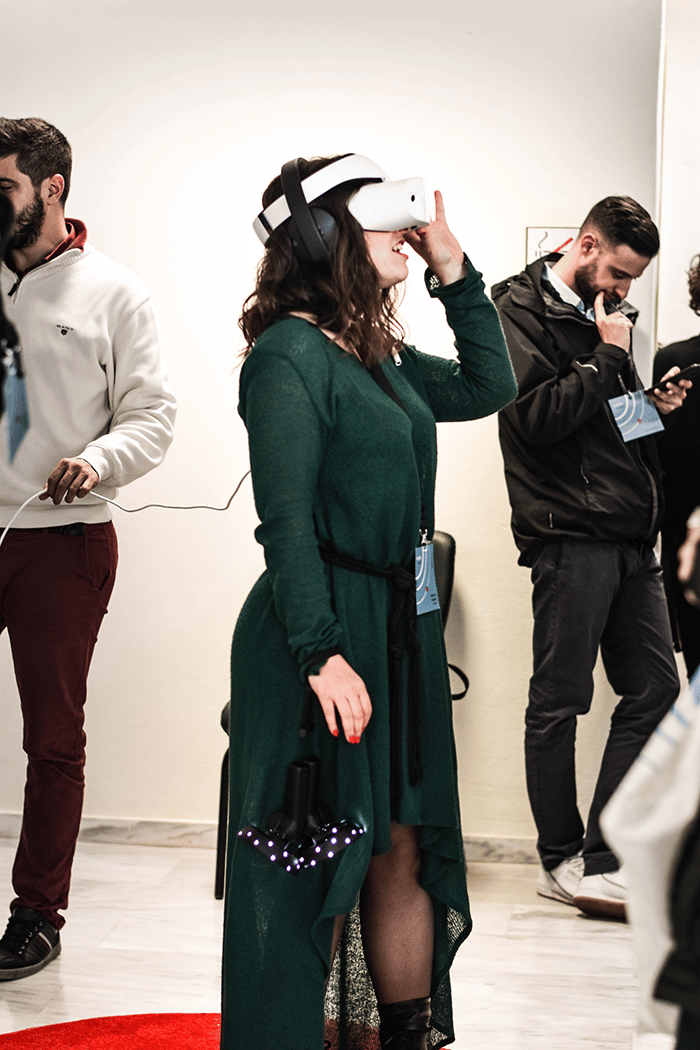
It’s important to note that weight loss will depend on the individual’s effort, the type of workout, and the intensity of the workout, as well as the diet of the person. It’s recommended to combine the use of VR apps with a healthy diet and adequate hydration, as well as consult with a doctor or a nutritionist if you have any concerns regarding your health or weight loss.
It’s also important to be consistent with your exercise routine and to gradually increase the intensity and duration of your workouts as you become more fit. This will help you to achieve your weight loss goals and maintain a healthy weight over the long term.
Does Oculus Have Workout Apps?
Yes, Oculus has a variety of workout apps available for their VR headsets, such as Oculus Quest and Oculus Quest 2. Some popular workout apps available on the Oculus platform include:
- Supernatural: This app offers a full-body workout through a combination of cardio and bodyweight exercises, set to the rhythm of the music. The app includes a virtual personal trainer that guides users through their workouts.
- FitXR: This app offers a full-body workout through a combination of cardio and strength training exercises, set to the rhythm of the music. The app includes a virtual personal trainer that guides users through their workouts.
- The Thrill of the Fight: This app offers a full-body workout through a boxing simulation, the app uses a set of pads that connect to the VR headset and track the user’s punches. The app includes a virtual personal trainer that guides users through their workouts.
- BoxVR: This app offers a full-body workout through a boxing simulation, set to the rhythm of the music. The app includes a virtual personal trainer that guides users through their workouts.
- OhShape: This app focuses on providing a full-body workout through a combination of cardio and bodyweight exercises, set to the rhythm of the music. The app includes a virtual personal trainer that guides users through their workouts.
- Holofit: This app provides an immersive and interactive workout experience, simulating various outdoor sports and activities, such as cycling, rowing, and running. The app includes a virtual personal trainer that guides users through their workouts.
These are just a few examples, and the Oculus platform has a wide variety of workout apps available, catering to different fitness levels, goals, and preferences.
How Long Should You Be in VR for a Day?
The recommended amount of time for using virtual reality (VR) devices varies depending on the individual’s age and physical condition, as well as the purpose of the VR experience. It’s important to take breaks and not to use VR for extended periods of time, to allow your eyes and body to rest.
The American Academy of Ophthalmology recommends taking a 15-minute break every hour when using a VR headset, as prolonged use can cause eye strain, headaches, and fatigue. It’s also important to note that VR use can cause motion sickness, and it’s important to take breaks if you start feeling dizzy or nauseous.
In general, it’s recommended to not use VR for more than 2 hours at a time, and to take breaks every 30 minutes to an hour. This can help to prevent eye strain, headaches, fatigue, and motion sickness.
It’s also important to note that children have different needs regarding screen time and also different visual acuity, therefore the American Academy of Pediatrics recommends children under the age of 2 should not have any screen time and children between the ages of 2 and 5 should have limited screen time (1 hour or less per day) and to be supervised by an adult.
It’s also important to consider the overall impact of prolonged VR use on your physical and mental health, and to consult with a doctor or other healthcare professional if you have any concerns.
Is it Healthy to Play VR Every Day?
Using virtual reality (VR) devices every day can be healthy in moderation, as it can provide a fun and engaging way to exercise and stay active. However, prolonged use of VR devices can have negative effects on your physical and mental health, and it’s important to use VR in moderation and to take breaks to rest your eyes and body.
Prolonged use of VR devices can cause eye strain, headaches, fatigue, and motion sickness. It’s recommended to take breaks every 30 minutes to an hour, and to limit use to no more than 2 hours at a time. It’s also important to take breaks and not to use VR for extended periods of time, to allow your eyes and body to rest.
It’s also important to consider the overall impact of prolonged VR use on your physical and mental health, and to consult with a doctor or other healthcare professional if you have any concerns.
It’s also important to balance the time spend on VR with other activities, such as physical exercise, social interaction, and spending time in nature. Spending too much time in VR can negatively impact your social and emotional well-being, and it’s important to maintain a balance between different activities to promote overall well-being.
It’s also important to consider the content of the VR experience, as it can have a psychological effect on the users. It’s important to be aware of the potential impact of violent or traumatic content on your mental health, and to seek professional help if you experience any negative effects.
In summary, it’s important to use VR in moderation, take breaks, and to balance your time spend on VR with other activities. Consult with a doctor or other healthcare professional if you have any concerns.
Is it OK to Sleep in VR?
It is generally not recommended to sleep in virtual reality (VR) because it can be harmful to your physical and mental health.
Sleeping while wearing a VR headset can cause discomfort and pressure on your face, eyes, and ears. This can lead to headaches, eye strain, and fatigue. Also, the VR headset’s screens emit light that can disrupt the natural process of falling asleep, which can affect the quality of sleep and lead to insomnia.
Additionally, sleeping in VR can also have a negative impact on your mental health. The immersive nature of VR can make it difficult to distinguish between reality and the virtual world, which can cause confusion and disorientation. This can lead to nightmares and other sleep disturbances, and can affect the quality of your sleep.
It’s also important to note that some VR experiences are not suitable for children and can cause nightmares, as children are more vulnerable to the psychological effects of media.
It’s recommended to remove the VR headset before going to sleep and to take a break from using VR at least an hour before bedtime to allow your eyes and body to rest and to allow your brain to wind down. It’s also important to have a good sleep hygiene and create a comfortable sleep environment, such as keeping the room dark and quiet, keeping the temperature cool and comfortable, and avoiding screens before bedtime.
In summary, it’s not recommended to sleep in VR as it can have negative effects on your physical and mental health, and it’s important to take breaks from using VR and to have a good sleep hygiene to promote a good quality of sleep.
Can VR Give You Muscles?
Using virtual reality (VR) devices, specifically VR fitness apps, can provide a fun and engaging way to exercise, and with consistent use, it can help to build muscle strength.
VR fitness apps offer a variety of exercise options such as boxing, weightlifting, and cardio, that can help to target different muscle groups and increase muscle strength. Additionally, the immersive nature of VR can make exercise more enjoyable, which can help to increase adherence to exercise and promote muscle growth.
However, it’s important to note that VR alone is not enough to build muscle, and it should be combined with a consistent workout routine, a balanced diet, and adequate rest for muscle recovery. Also, it’s important to start gradually, and gradually increase the intensity and duration of your VR workout to avoid injury and muscle soreness.
It’s also important to note that the results of muscle growth will depend on the individual’s starting point and the effort put in, and it’s important to consult with a doctor or personal trainer before starting a new workout routine, especially if you have any health concerns.
In summary, VR fitness apps can provide a fun and engaging way to exercise, and with consistent use, it can help to build muscle strength. However, it’s important to combine it with a consistent workout routine, a balanced diet, and adequate rest for muscle recovery and consult with a doctor or personal trainer before starting a new workout routine.
Is there VR Zumba?
Yes, there are virtual reality (VR) fitness apps that offer Zumba-style dance workouts. These apps use VR technology to immerse users in a virtual dance class, where they can follow along with a virtual instructor and other virtual dancers.
Examples of VR Zumba apps include:
- Zumba VR: This app offers a variety of Zumba-style dance workouts, set in different virtual locations such as a beach, a club, and a concert stage. Users can choose from different levels of difficulty and follow along with a virtual instructor.
- Dance Central VR: This app offers a variety of dance styles, including Zumba, and users can follow along with a virtual instructor and other virtual dancers.
- VR Fitness: This app offers a variety of VR fitness experiences, including Zumba-style dance workouts, where users can follow along with a virtual instructor and other virtual dancers.
- VR Zumba Fitness: As the name suggest, this app offers Zumba-style dance workouts with a virtual instructor and other virtual dancers, where users can follow along.
These apps provide a fun and engaging way to exercise, and the immersive nature of VR can make it more enjoyable. However, it’s important to note that VR alone is not enough to build muscle, and it should be combined with a consistent workout routine, a balanced diet, and adequate rest for muscle recovery.
Also, it’s important to start gradually, and gradually increase the intensity and duration of your VR workout to avoid injury and muscle soreness.
How Many Calories are Burned Playing VR?
The number of calories burned while playing virtual reality (VR) games varies depending on the type of game and the intensity of the activity.
A study by the University of Portsmouth found that playing VR games can burn between 3-8 calories per minute. This is similar to the amount of calories burned while sitting or standing, but less than the number burned during more intense activities such as running or weightlifting.
However, there are VR fitness apps that are specifically designed to provide a more intense workout, such as boxing, weightlifting, and cardio, that can help to target different muscle groups and increase muscle strength. These apps can burn more calories compared to regular VR games, as it requires more movement and exertion from the user.
For example, playing boxing games or fitness games in VR can burn around 6-8 calories per minute. While playing VR games specifically designed for workout, like Supernatural, can burn up to 11 calories per minute, depending on the intensity of the workout.
It’s important to note that the calorie burn will also depend on the individual’s weight, height, and fitness level, and it’s important to consult with a doctor or personal trainer before starting a new workout routine, especially if you have any health concerns.
It’s also important to note that, while VR fitness apps can be a fun and engaging way to exercise, they should not be considered as a substitute for a consistent workout routine, a balanced diet, and adequate rest for muscle recovery. It’s important to combine it with a consistent workout routine, a balanced diet, and adequate rest for muscle recovery and consult with a doctor or personal trainer before starting a new workout routine.
Can VR Damage your Health?
Virtual reality (VR) technology is generally considered safe for most people, but there are some potential health risks that should be considered.
One of the most common complaints associated with VR is eye strain and headaches caused by prolonged use of the headset. This is due to the fact that the lenses in the headset can cause the eyes to focus and refocus continually, which can lead to eye fatigue and headaches. To avoid this, it is recommended to take breaks every 20-30 minutes and to make sure that the VR headset is adjusted properly to reduce eye strain.
Another potential risk is motion sickness caused by the disconnect between the movement displayed in the virtual environment and the user’s physical movements. This can be mitigated by taking breaks during prolonged use and by adjusting the game settings to reduce the level of motion.
Some people may have a hard time adjusting to the virtual environment and may experience feelings of disorientation, vertigo, and nausea. To avoid this, it is important to start gradually and to stop using the VR headset if you experience any discomfort.
Additionally, prolonged use of VR headsets can cause neck and shoulder pain due to the weight of the headset and the need to hold the head in a fixed position for long periods of time. To avoid this, it is important to take frequent breaks and to adjust the headset for a comfortable fit.
It is also important to note that if you have any pre-existing health conditions or are pregnant, you should consult your doctor before using VR technology.
Overall, while VR technology is generally considered safe, it is important to use it in moderation, take breaks during prolonged use, and to adjust the headset and game settings to reduce the risk of eye strain, headaches, motion sickness, and other symptoms.

